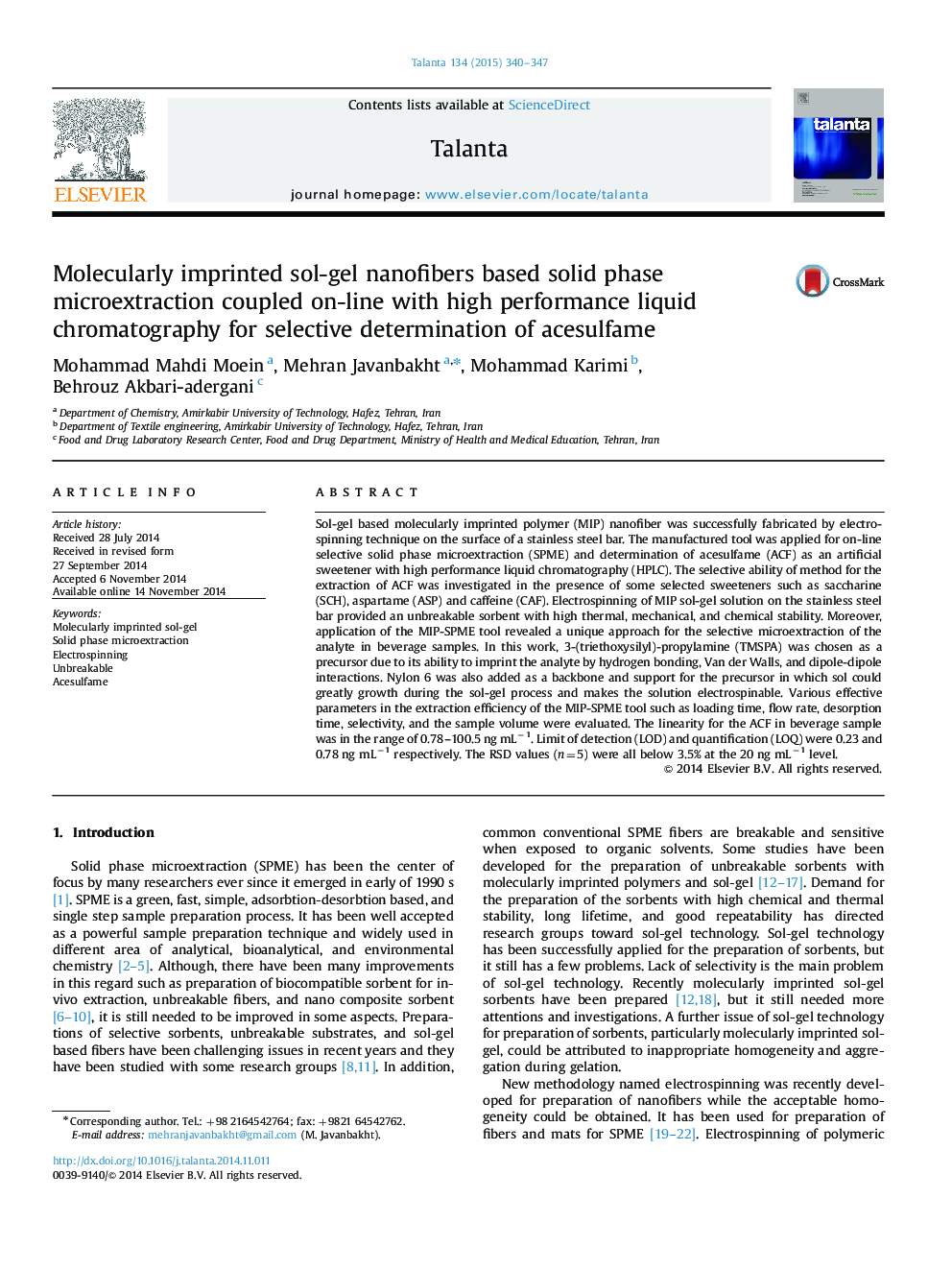| کد مقاله | کد نشریه | سال انتشار | مقاله انگلیسی | نسخه تمام متن |
|---|---|---|---|---|
| 1244088 | 1495801 | 2015 | 8 صفحه PDF | دانلود رایگان |
• Sol-gel based MIP was successfully synthesized by electrospinning technique.
• The nanofibers were applied for on-line determination of acesulfame with SPME-HPLC.
• The method provided an unbreakable sorbent with high thermal and chemical stability.
• MIP-SPME used for the selective separation of the analyte in beverage matrices.
Sol-gel based molecularly imprinted polymer (MIP) nanofiber was successfully fabricated by electrospinning technique on the surface of a stainless steel bar. The manufactured tool was applied for on-line selective solid phase microextraction (SPME) and determination of acesulfame (ACF) as an artificial sweetener with high performance liquid chromatography (HPLC). The selective ability of method for the extraction of ACF was investigated in the presence of some selected sweeteners such as saccharine (SCH), aspartame (ASP) and caffeine (CAF). Electrospinning of MIP sol-gel solution on the stainless steel bar provided an unbreakable sorbent with high thermal, mechanical, and chemical stability. Moreover, application of the MIP-SPME tool revealed a unique approach for the selective microextraction of the analyte in beverage samples. In this work, 3-(triethoxysilyl)-propylamine (TMSPA) was chosen as a precursor due to its ability to imprint the analyte by hydrogen bonding, Van der Walls, and dipole-dipole interactions. Nylon 6 was also added as a backbone and support for the precursor in which sol could greatly growth during the sol-gel process and makes the solution electrospinable. Various effective parameters in the extraction efficiency of the MIP-SPME tool such as loading time, flow rate, desorption time, selectivity, and the sample volume were evaluated. The linearity for the ACF in beverage sample was in the range of 0.78–100.5 ng mL−1. Limit of detection (LOD) and quantification (LOQ) were 0.23 and 0.78 ng mL−1 respectively. The RSD values (n=5) were all below 3.5% at the 20 ng mL−1 level.
Figure optionsDownload as PowerPoint slide
Journal: Talanta - Volume 134, 1 March 2015, Pages 340–347
